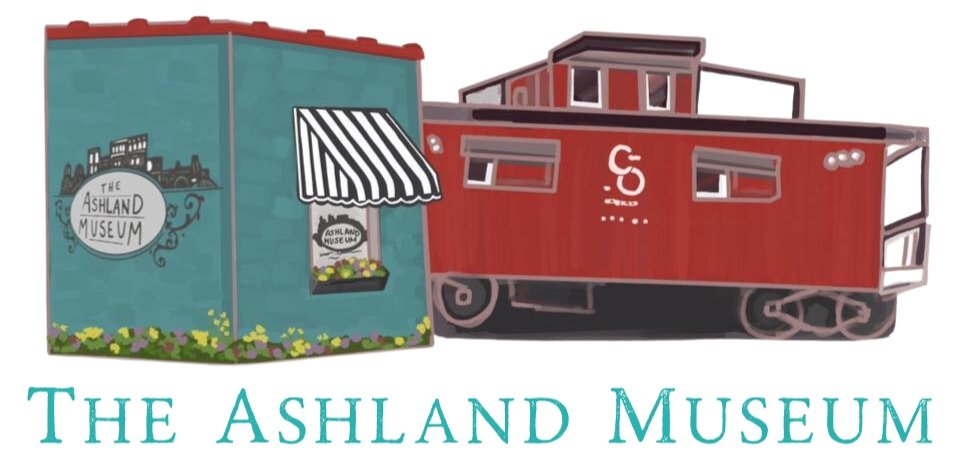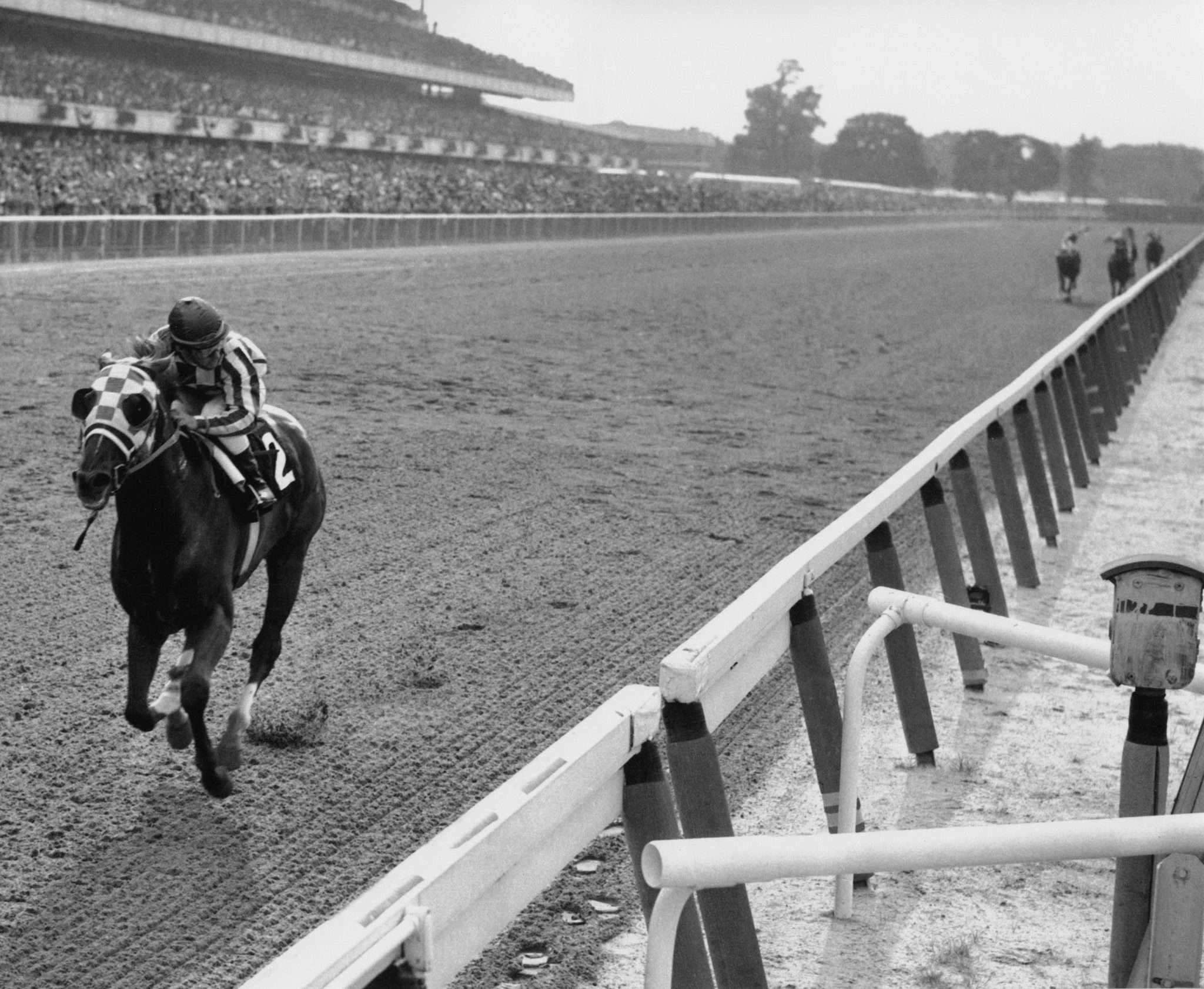Secretariat (1970 - 1989)
Secretariat
Celebrating Family Ties to Secretariat, Hometown Hero
By Leeanne Meadows Ladin, co-author of Secretariat’s Meadow – The Land, The Family, The Legend with Kate Chenery Tweedy
June 21, 2022
With the recent Triple Crown races of 2022 now receding into memory, one horse still commands the spotlight. Nearly half a century after his spectacular Triple Crown of 1973, Secretariat’s records and reputation reign supreme. The Virginia-born champion is omnipresent at every running of the Kentucky Derby, Preakness and Belmont, with film clips highlighting his thrilling wins and sportscasters wondering if any horse will ever break his impervious track records. Few athletes can boast records that remain untouched for 50 years.
ESPN named Secretariat as #35 of the Top 50 Athletes of the 20th Century. His astounding 31-length win in the Belmont is universally hailed as one of the greatest moments in the world of sports. As Horse of the Year in 1972 and 1973, he was inducted into the National Racing Hall of Fame in 1974.
Secretariat’s progeny have also kept him in the racing history books. Most Thoroughbreds competing in today’s top races have Secretariat in their pedigrees. In the 2022 Kentucky Derby, for example, 17 of the 20 contenders were descendants of Secretariat. Moreover, there have been only two Triple Crown winners in the 21st century—American Pharoah in 2015 and Justify in 2018—and they both boast “Big Red” in their lineage.
Secretariat was celebrated not only for his racing prowess, but for his equine physique. Many experts noted his perfect conformation which gave him a flawless anatomy that equipped him with both speed and stamina. He also demonstrated an enormous racing stride that could cover over 25 feet in a single bound. But one of his most surprising physical attributes was his great heart, measured at his autopsy in 1989 at 22 pounds, the largest of any horse on record. It was a super engine that powered incomparable feats.
In 1973, Secretariat hit a publicity trifecta, gracing the cover of TIME, Newsweek and Sports Illustrated as “America’s Super Horse.” He continues to be a media star and cultural icon. In 2010, the Disney film Secretariat introduced a new generation to the great horse and remains a favorite of fans young and old. Several best-selling books have chronicled his life and racing career. Websites and special events are dedicated to him, and he enjoys a devoted following on Facebook, Instagram, Pinterest and other social media.
Secretariat is now in the spotlight at the Ashland Museum, which recently mounted a new exhibit that illustrates his and Meadow Stable’s place in racing history. Ashland and Hanover County boast deep family ties to “America’s Super Horse.” The town was the home of his breeder and founder of Meadow Stable, Christopher Chenery (1886-1973). He grew up in the Queen Anne-style house at Duncan and (prophetically) Race Course streets. Many aspects of his early life here would shape the future he carved out for himself.
From the start, Chris Chenery was a horse-crazy boy. Ashlanders would joke that “Chris will run any errand as long as it involves a horse!” He landed a dream job of exercising racehorses for his cousin Bernard Doswell at the former Bullfield Stable near the town of Doswell. Bullfield reigned as one of the most renowned racing stables in the United States in the 1840s-1890s. Its most eminent champion was a chestnut stallion named Planet, also known as the “Great Red Fox,” now listed in the National Racing Hall of Fame. Chris would walk seven miles from Ashland to Bullfield where his cousin lived on a portion of the farm named Hildene. Little did he know at the time that he was taking the first steps on the road to racing immortality.
At Hildene, Bernard Doswell regaled Chris with tales of Bullfield’s glory days and showed him an array of silver trophies. Penny Chenery later recalled that this experience “lit a spark” in her father, who began to dream of having his own stable and even winning the Kentucky Derby. For a boy whose family was struggling to get by, like many folks after the financial panic of 1893, this was a lofty goal. Yet his driving ambition would eventually propel him to the executive suites of New York City where his business acumen made him a millionaire in the utilities industry.
But Chris Chenery never forgot his roots in Ashland. When someone arrived in his Manhattan office asking to see “Mr. Chee-nery,” he instantly knew they were from Virginia and welcomed them right in. He was a generous benefactor to Randolph- Macon College, which he and his brothers had attended, as well as to St. James The Less Church and other Ashland entities.
In 1936, armed with the unshakable conviction that Virginia could once again produce champion Thoroughbreds, Chris Chenery purchased The Meadow, a former Caroline County plantation that had belonged to his great-great aunt Emily Morris. He had visited there often as a boy and galloped horses across its rolling fields. As a man once driven to make his fortune, Chenery now would be driven to make The Meadow a renowned racing stable inspired by Bullfield.
In fact, history would repeat itself in ways both subtle and dramatic. Chenery named his first foundation mare Hildene and began to establish the bloodlines that would lead to the National Museum of Racing Hall of Fame. While Bullfield had been called a nursery of Virginia racehorses, The Meadow became known as the empire built on broodmares. The design of the Meadow stables and fences would resemble those at Bullfield. In the spirit of the Doswells’ famous “Field Days” of horse racing and hospitality, Chenery hosted the Camptown Races at the Meadow in 1953-1958 as a benefit for the Ashland War Memorial.
Defying the skeptics who claimed that Thoroughbreds could only thrive in the Kentucky bluegrass, Chenery enjoyed early success with Meadow Stable. His first Hall of Fame horse was Hill Prince, who won the Preakness in 1950. The Herald Progress documented crowds of fans greeting the champion as he was led from the Doswell train station back to The Meadow. Soon other trophies began to stack up for winners like First Landing, Sir Gaylord, Cicada and others. Meadow Stable became one of the largest employers in the region, hiring both white and African-American workers. When a Meadow Stable horse won a stakes race, Chenery rewarded each employee, regardless of their position, with an extra week’s pay.
Still his Derby dream remained elusive over the years. Then in 1972, Riva Ridge, a deer-like bay colt, triumphed in the “Run for the Roses.” Although Chris Chenery was by then suffering from Alzheimers’, when told of this long-sought victory, he shed tears of joy. Riva’s Derby win also validated the success of Penny Chenery, who had stepped up to run the stable for her father.
Mr. Chenery died in January 1973 and was buried in the Chenery family plot at Woodland Cemetery in Ashland. He never saw Secretariat run, but his daughter, Penny, and her devoted team would guide the last great champion he bred to glory. Meadow Stable’s “Big Red,” echoing the hoofbeats of Planet, the Great Red Fox of Bullfield, would carry Chris Chenery’s dream far beyond the Derby to create a racing legacy for the ages.
Like her father, Penny Chenery, known as the “First Lady of Racing,” never forgot her family’s Virginia roots. A resident of Boulder, Colorado, in her later years, she visited The Meadow for special Secretariat events and enjoyed staying at the Henry Clay Inn. In 2011, Randolph-Macon College awarded her an honorary doctorate. In 2013, hundreds of fans from all over the country flocked to see Penny, jockey Ron Turcotte and groom Charlie Davis for the 40th anniversary of Secretariat’s Triple Crown in 2013 where they enjoyed the singular experience of watching the Secretariat film at Secretariat’s birthplace with members of the original Secretariat team. Penny died in 2017 at the age of 95 and is buried at Woodland Cemetery near her father.
Today, Kate Chenery Tweedy, an Ashland resident, carries on the work of her grandfather and mother as a steward of the Secretariat legacy. She shared many of the items from the family collection for the Secretariat exhibit in the Ashland Museum.
Now a civic group called Secretariat For Virginia (SECVA) is working to bring a magnificently sculpted bronze monument of the champion to Virginia. Acclaimed sculptor, Jocelyn Russell, captured Secretariat’s physical perfection and mythical presence in “Secretariat - Racing Into History.” Stating 21 feet long and 11.5 feet tall, it is the largest of any Secretariat statue to date. At one and a half times his actual size, it is larger than life, just as he was. It shows him in full racing stride with jockey Ron Turcotte aboard. Jocelyn consulted with veterinarians and Ron himself to replicate the horse’s powerful motion. One edition of the monument is already in Lexington, Kentucky. The enormous bronze horse created a media sensation as it traveled on a flat-bed trailer from the foundry in Oklahoma to Kentucky in 2019—looking for all the world as if Secretariat were racing down the highway.
Jocelyn has offered the second and last version of her Secretariat monument to Virginia, noting that Kentucky has three statues of Secretariat; New York has two; and Canada has one. Virginia, where Secretariat was born, raised and first trained, has none.
As a tourism attraction, “Secretariat – Racing Into History” would bring ardent fans from all over the country to Central Virginia and raise the national profile of its location. SECVA representatives note that it would be a fitting celebration to unveil this stunning depiction of this iconic American champion here in his home state in 2023 for the 50th anniversary of his Triple Crown. Fans, community members and civic leaders are joining together with the hope that this effort can give their hometown hero the recognition he richly deserves on his own Virginia turf.

